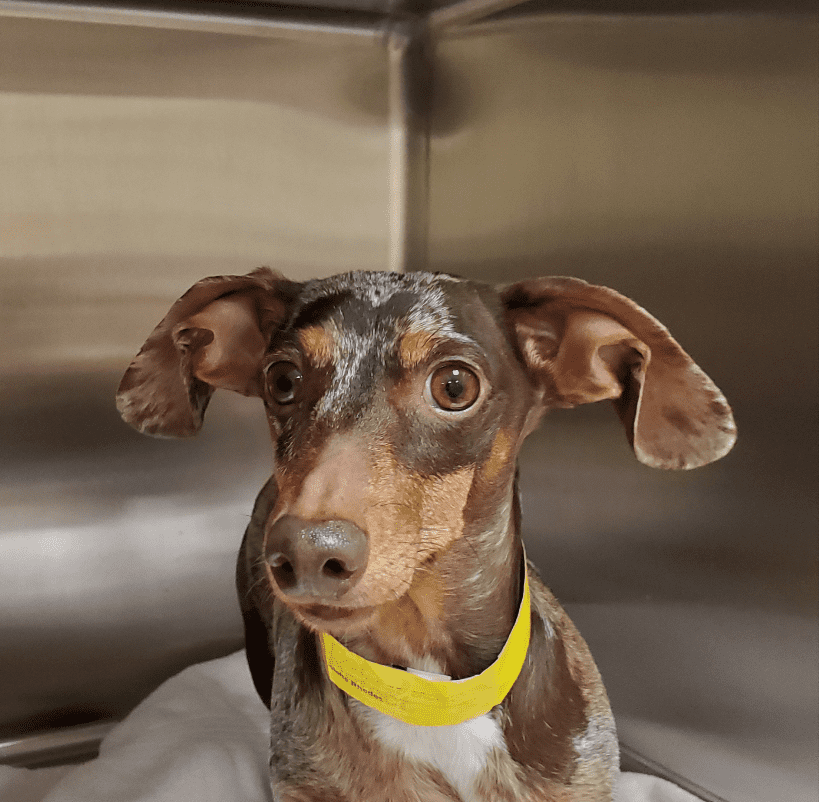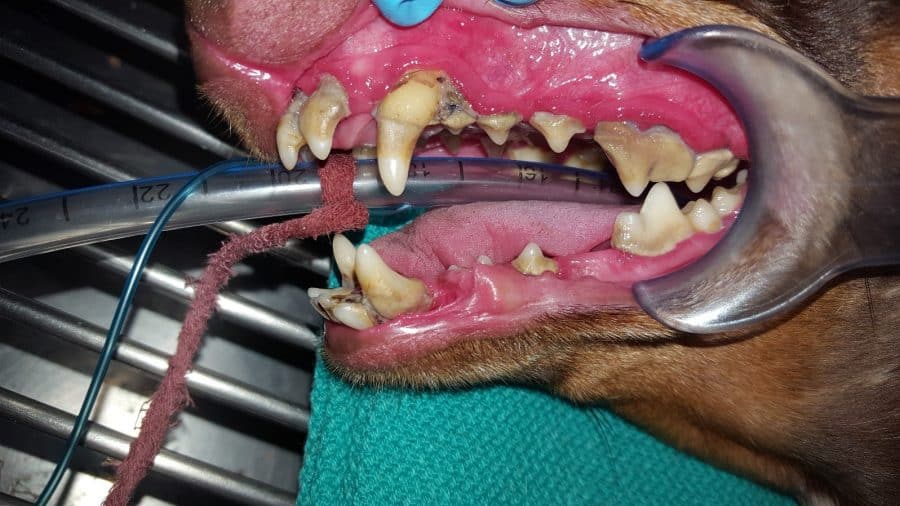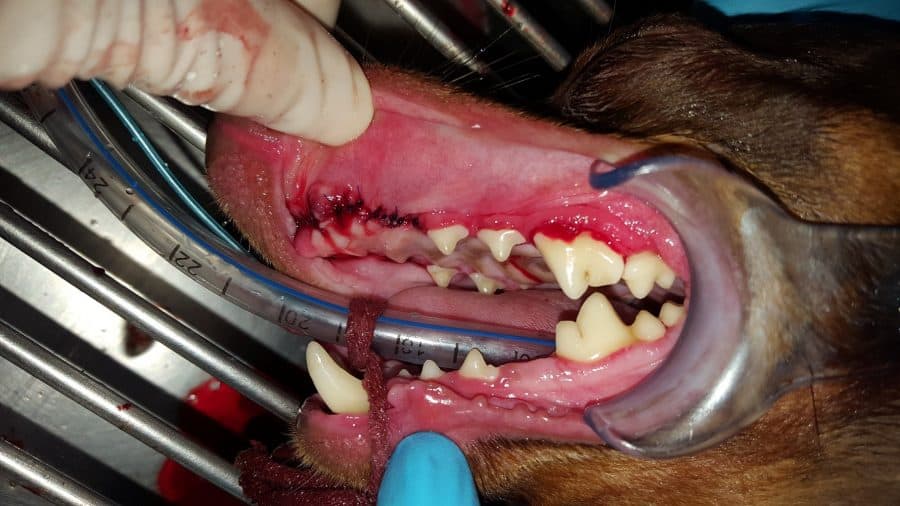Dental disease comes in different degrees of severity, based on the amount of plaque, tartar, gingivitis, and periodontal disease that are present. Here is a story about a dog named Drizzy.
 Drizzy Drake is a 7.5-year-old Dachshund. Drizzy was brought in every year for his Preventive Care Exam. During Preventive Care Exams, our veterinarians do an oral evaluation to decide what grade of periodontal disease is present.
Drizzy Drake is a 7.5-year-old Dachshund. Drizzy was brought in every year for his Preventive Care Exam. During Preventive Care Exams, our veterinarians do an oral evaluation to decide what grade of periodontal disease is present.
Through the years, Drizzy’s dental score was a grade 1 for years 2015 through 2017.
What does that mean?
Grade 1: The first stage of periodontal disease occurs when bacteria multiply on the tooth’s surface and under the gum line forming plaque. Eventually, plaque mineralizes and hardens, becoming calculus. Plaque, calculus, and the toxins produced by the bacteria irritate the gums causing them to become tender, swollen, and red. This is referred to as gingivitis.
Come 2018, Drizzy scored a grade 3 and a dental cleaning was recommended immediately. However, that did not get done.
Grade 3: Once a pet has progressed beyond grade two periodontal disease, the dental cleaning falls into a therapeutic treatment and becomes much more involved and expensive. Dental disease beyond this stage is not reversible, and treatment is then aimed at slowing the progression of dental disease, and minimizing the serious effects on vital organs.
Dental disease at this stage affects more than the mouth. The simple act of chewing on a piece of food causes the gums to bleed and provides an opportunity for bacteria to enter the bloodstream. From the mouth, the bacteria easily travel to the vital organs such as the liver, kidneys, and heart.
Immediate treatment is strongly encouraged at this time to slow the progression of dental disease, reduce or eliminate pain, and minimize any further internal organ damage.
Drizzy came in for his Preventive Care Exam in 2019 and his dental score went from a grade 3 to a grade 4 – the most severe case of dental disease. His veterinarian reported severe dental disease with moderate to severe tartar and gingivitis.
Grade 4: The inflamed gums eventually pull away from the teeth, creating periodontal pockets beneath the gum line. Bacteria flourish in these pockets, significantly weakening the supporting structures and the bone of the jaw. The simple act of chewing on a piece of food causes the gums to bleed and provides an opportunity for bacteria to enter the bloodstream. From the mouth, the bacteria easily travel to the vital organs such as the liver, kidneys, and heart.
During this stage, deep cleaning and periodontal surgery may be needed to save affected teeth. Extractions may be indicated for more severely affected teeth. If not treated, grade 4 periodontal disease will progress damaging more structures.
Immediate treatment is strongly encouraged at this time to stop progressive dental disease and prevent any further internal organ damage.
Finally, Drizzy was scheduled for his grade 4 dental cleaning in January 2020.
As soon as they got Drizzy under anesthesia, the CVT and doctor were able to see much more. They reported very heavy tartar and significant gingivitis with gingival recession on many teeth. All of the remaining incisors (front teeth) were mobile. Drizzy was in need of full mouth x-rays that consist of 10-12 views. This helps the doctor see any underlying disease below the gum line.
On average, dogs have 42 teeth. During Drizzy’s dental treatment, fourteen teeth needed to be extracted due to the severity of his periodontal disease. Unfortunately, this alone took two hours, and he will need to return to have seven more teeth extracted.
Had Drizzy come in for routine dental cleanings, these teeth most likely would have survived much longer.
BEFORE:

The red line indicates where the gumline is supposed to meet the tooth. Drizzy has SEVERE gum recession.
AFTER:

It is much better to take care of the teeth while they are still a Grade 1 or 2. By the time they reach Grade 3 or 4, periodontal disease and bone loss is present, and they are likely to lose teeth. The cleanings also take a lot longer and cost a lot more. Let’s take care of this problem while we can save the teeth and save you some money.



